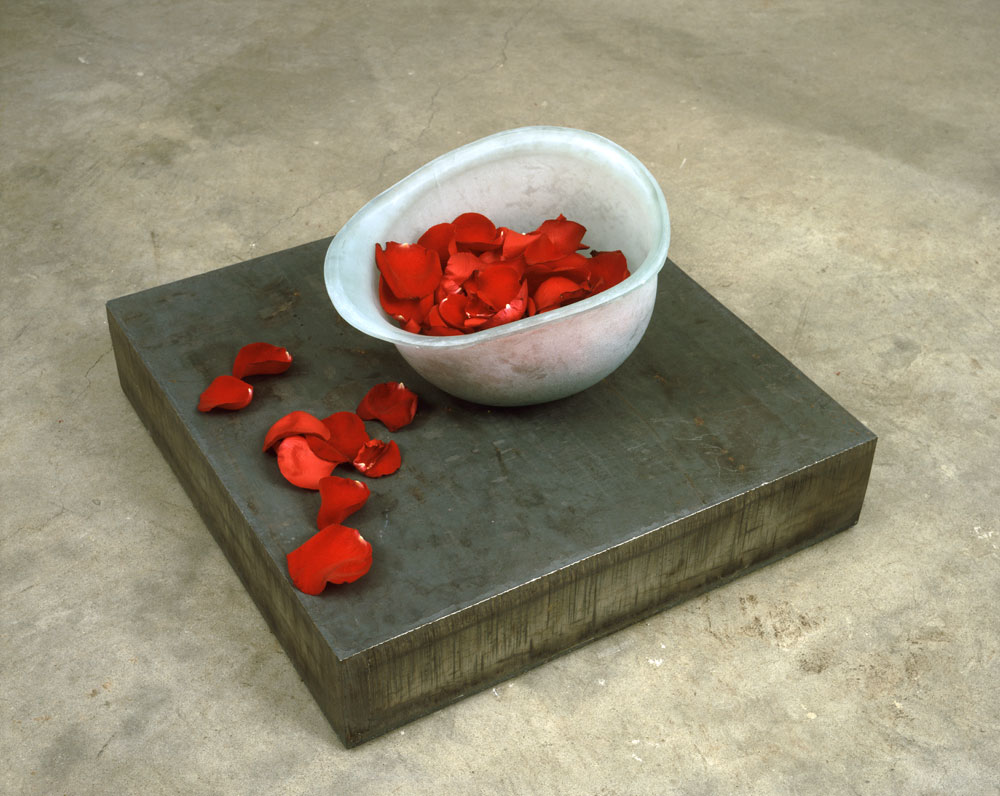
Joseph Zito At Lennon Weinberg
November 2005 · by Eleanor Heartney

Given that Joseph Zito’s subject here was war and its effects, the sculptures in this exhibition (all 2004–05) had a surprisingly light touch. The best are like haikus, simple gestures that reverberate outward, evoking pity, pathos, grief and rage without resorting to histrionics or bombast. Like Zito’s earlier sculptures, they reveal a strong relationship to the restraint of Minimalism and the evocative dissonance of Post-Minimalists like Eva Hesse and Bruce Nauman, as well as to the work of Felix Gonzalez–Torres.
Some of the works displace or juxtapose preexisting objects, while others follow Robert Gober's strategy of re-creating familiar items out of unexpected materials. As a result, the relationship between material and form is crucial to an interpretation of the works. For instance, Untitled (Helmet) is a military helmet cast from glass and filled with real rose petals. The fragility of the materials presents a counterpoint to the martial reference, giving the work an elegiac air. Dog Tag melds the outlines of a soldier’s ID with the polished granite solidity of a tombstone. One of the most powerful works here was Ascension, in which a number of small, infant–size body bags were attached to the wall, one above the other, from floor to ceiling. They were died in shades of reddish purple, from dark purple on the bottom to gradually lighter hues, eventually arriving at pure white at the top of the column.
Several Sculptures use the form of the hand grenade to various effects. In one work, grenades are cast out of white rubber and cluster in a basket like Marcel Broodthaers’s eggshells. In another they are composed of wood and partially covered with a layer of shiny red enamel; they hang in a cluster from the ceiling like party balloons. In Precious Object, a single copper grenade rests like a piece of jewelry on a red satin pillow atop a red Plexiglas base. In each case, the conflation of these instruments of death with benign domestic objects is chilling.
Zito also included a set of gunpowder drawings, which are created by placing gunpowder on the white paper and igniting it. The fire is extinguished before it burns away the paper, leaving behind a dark residue. As in the gunpowder drawings of Cai Guo Qiang, Zito’s works sometimes carry the historical and metaphorical weight of this unusual material. In some of them, the burn marks are carefully contained within designs (targets, stars and stripes) that reference war and nationalism. In others, Zito scatters the powder more randomly so that the drawing resembles a starburst of shrapnel blast.
In this show, Zito sensitively evoked the specter of war and its domestication without having to hammer his points home. Tinged with sadness, these sculptures and drawings leave it to the viewer to connect the dots.